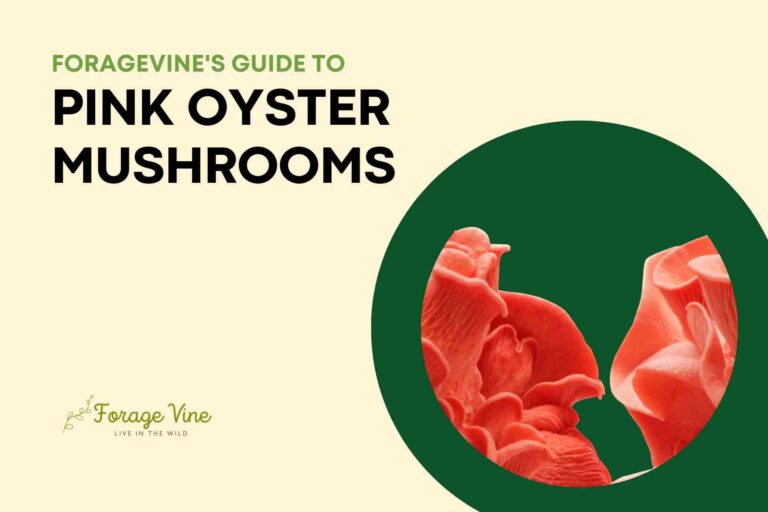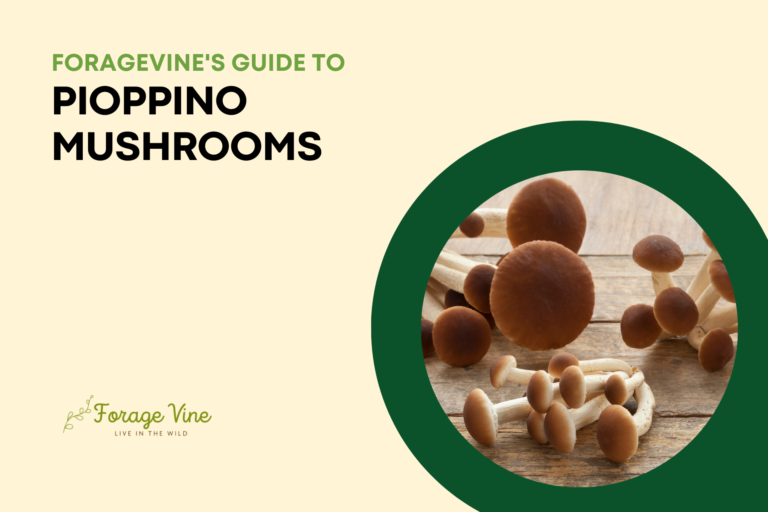Laetiporus Cincinnatus: Identification, Lookalikes and Is it Edible?
Have you ever heard of the delicious mushroom species Laetiporus Cincinnatus’ and wondered how to identify, grow, harvest, store, and eat it? Laetiporus – known as ‘chicken of the woods’ or ‘sulfur shelf mushroom’ – is a large polypore bracket fungi prized for its flavor and texture.
It can be harvested from the wild relatively easily, but cultivating Laetiporus at home has become increasingly popular in recent years. This blog post is your one-stop guide to learning all there is to know about this unique species.
In this article, we will explore identification tips for differentiating between poisonous lookalikes like Thelephora terrestris and instructions on growing edible mushrooms in your backyard!
Whether you are an avid mycologist looking to add more diversity to your culinary repertoire or simply curious about this delectable fungus – read on for everything, you need to know about harvesting Laetiporus Cincinnatus!
What is Laetiporus Cincinnatus?
Laetiporus Cincinnatus, commonly known as the Chicken of the woods mushroom, is a unique species widely sought after. Its bright orange-yellow color can identify the distinct feather-like pattern of frills on its cap and white pores underneath.
Although it looks similar to some inedible mushrooms found in nature, Laetiporus Cincinnatus is safe to eat and delicious! Growing them at home isn’t difficult either; wild grow them outdoors or grow them on logs and stumps in the right environment.
Learning more about these popular mushrooms will help you get closer to an enjoyable experience with nature – both culinary and aesthetically!
What Does Laetiporus Cincinnatus Taste Like?
If you’re wondering what Laetiporus Cincinnatus tastes like, this guide is for you! According to experienced foragers and chefs, it has a hearty and woodsy flavor that many say is similar to pork. Additionally, some describe the flavor as having hints of the usual mushroom suspects – nutty, meaty, buttery, and earthy.
But others claim this mushroom carries its unique flavor: neither Chicken nor steak or anything in between. Ultimately the only way to truly find out is by trying it yourself!
On top of that, if you want to get your hands on some Laetiporus Cincinnatus, we’ve got some great tips here on identifying your edible mushrooms and, eventually, how to grow them too.
Where Does Laetiporus Cincinnatus Grow?
Laetiporus Cincinnatus is an edible mushroom that is widespread, thriving in vast areas worldwide. Also known as Chicken of the Woods, they can grow in a wide variety of locations, including both temperate hardwood forests and coniferous woods.
When looking for Chicken of the Woods, keen-eyed foragers should look out for large clusters on old deciduous trees such as oak, lime, and beech, which are the preferred hosts.
As well as being eaten fresh, Laetiporus Cincinnatus has a variety of uses in cooking too; this edible fungus can be dried and reconstituted, added to soups, or even grilled to make delicious dishes!
How to Identify Laetiporus Cincinnatus
Identifying Laetiporus Cincinnatus is not as impossible as many think – all it takes is knowing what to look for!
As you can see, identifying this mushroom species can be quite straightforward as long as you know what features to look for – just keep an eye out for its vibrant colors and unique shape!
This mushroom species has a fan-shaped or semicircular cap with yellow to bright orange hues. The flesh of the cap can range from white to bright orange-yellow. Its stems often have shades on the underside that vary in color but are typically buff tan.
When it comes to the gills of Laetiporus Cincinnatus, they start whitish and turn yellow over time.
Laetiporus Cincinnatus Lookalikes
Laetiporus Cincinnatus is a distinct mushroom species, but it is important to note several lookalike species may be confused when identifying fungi.
The Psuedochaeuilleus, Agaricus placomyces, and Chicken of the Woods mushrooms can all be mistaken for Laetiporus Cincinnatus due to their similar coloring and shapes. Knowing the general characteristics of this species and studying its unique features in detail will help you correctly identify Laetiporus Cincinnatus among the lookalikes.
Join us in this Ultimate Guide to Laetiporus Cincinnatus. We will discuss how to tell it apart from its doubles, why it’s edible, and how to grow this delicious edible fungus successfully.
How to Grow Laetiporus Cincinnatus
Growing Laetiporus Cincinnatus is an exciting and rewarding endeavor that can be undertaken relatively easily. This mushroom species can be grown on various substrates, from wood chips to logs, and its mycelium can be incubated fairly quickly, given the right conditions.
Investment in basic supplies such as media jars and filter bags will set your fledgling fungi off on its path to growth.
Once you have inoculated your substrate with a culture or spore syringe, it takes about 6-8 weeks for fruiting bodies to begin forming and producing edibles! Investing in a few books on growing mushrooms is wise to ensure your setup brings the best results possible.
How to Clean Laetiporus Cincinnatus
Cleaning Laetiporus Cincinnatus is an essential part of preparing it for proper consumption.
The best way to clean this fungus depends on its size – smaller mushrooms can simply be rinsed under running water, while larger mushrooms should first be brushed or scraped off with a soft brush to remove any surface dirt.
Additionally, they should be put in a bowl or sink of cool or lukewarm water and gently stirred or swirled around with your hands until the dirt has been released.
Finally, the mushroom should be well-rinsed, blotted dry with a paper towel, and trimmed before it is ready for further preparation. Always wear gloves when working with wild-harvested mushrooms to ensure safety and hygiene!
How to Store Laetiporus Cincinnatus
Storing Laetiporus Cincinnatus is easy and can be done in multiple ways. Freshly harvested mushrooms should be stored in damp paper towels or plant material and placed in a plastic bag. This will help preserve moisture and maintain freshness.
For longer-term storage, the best way to maintain freshness is to dry them. The mushroom can either be dried using a food dehydrator at 40 degrees F for about four hours or hung up for 5-7 days until the minimal moisture content is left. Dried mushrooms are also much easier to store and have a better flavor when cooked than fresh mushrooms.
After drying, store your Laetiporus Cincinnatus in airtight containers like glass jars or zip-lock bags to ensure long-term freshness and ideal texture!
Is Laetiporus Cincinnatus Edible?
While the mushroom might look and smell unappealing, it is edible. The key is to clean and cook it properly.
Before cooking, remove any dirt or debris from the mushroom and ensure it is washed and vaporized with a paper towel or cloth.
After it has been cleaned, there are many ways you can prepare Laetiporus Cincinnatus for eating; for example, slicing it into thin strips for stir-fries and soups, tossing it in olive oil, then roasting at a low temperature, adding it to rice dishes for texture and flavor, or grilling for just a few minutes.
How you cook this delicious mushroom will depend on your preferences; whatever you choose to use in your kitchen will surely bring flavor and color to your meals!
How to Cook Laetiporus Cincinnatus
Cooks and curious mycophagists alike will be delighted by the delicious taste of Laetiporus Cincinnatus. To cook this mushroom, simply give each piece a good scrub to remove dirt or debris, then cut it into ½ inch slices.
These slices can then be sautéed in butter and garlic for a tasty dish. Marinate them in lime juice and soy sauce for an Asian-inspired version.
Either way, the mushrooms should be cooked until they are just tender – no extra crunch! Follow our Ultimate guide to Laetiporus Cincinnatus, where we discuss how to identify this mushroom and even how you can grow your own at home.
Health and Nutritional Benefits of Laetiporus Cincinnatus
Laetiporus Cincinnatus is a mushroom native to North America and parts of Europe. Historically, it has been enjoyed by Indigenous populations for its nutty flavor and nutrient-rich properties.
While there are some concerns regarding the danger of eating wild edibles without knowing their exact identity, those who can confirm the mushroom’s identity will benefit from its substantial health benefits.
Not only is Laetiporus Cincinnatus packed with vitamins, minerals, and antioxidants, but it is also a great source of dietary fiber and protein—providing energy to support an active lifestyle. Eating this mushroom can even reduce symptoms associated with digestion issues while supporting brain health and boosting the immune system.
If you want to add more nutrition to your diet without sacrificing taste, consider growing Laetiporus Cincinnatus in your backyard or sourcing it from accredited retailers.



